Male and female crocodiles can be incredibly difficult to tell apart. For one thing, they both look like armored tanks with tails. For another thing, their genitals are so well hidden that an observer would have to restrain and flip them over to get a good look. So what’s the best way to tell a male from a female at the zoo or in the wild? In this article, we’ll run through six possible ways to distinguish between male and female crocodiles, whether close-up or from a distance.
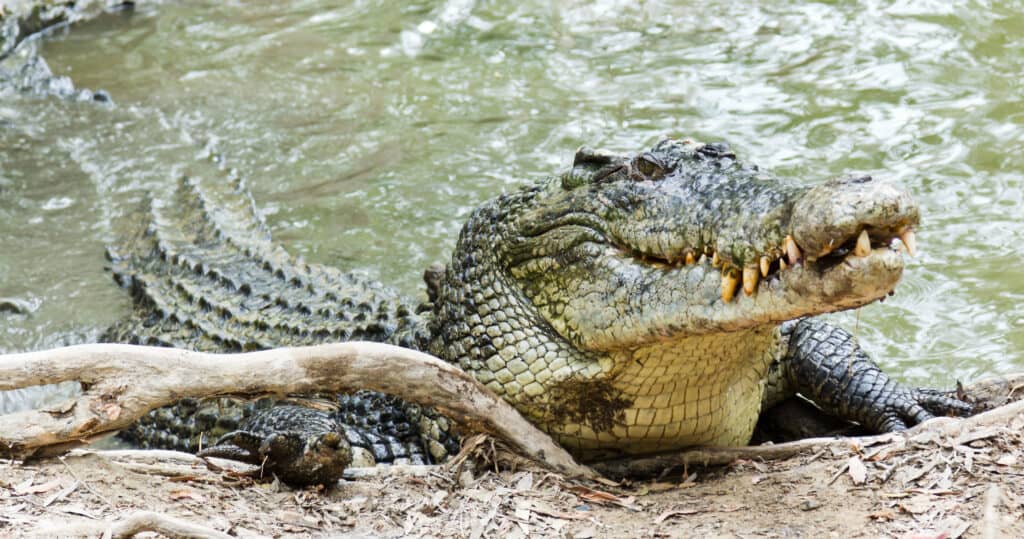
Crocodile species range from the massive saltwater crocodile to the diminutive dwarf crocodile.
©Meister Photos/Shutterstock.com
Summary Table of Male vs Female Crocodiles
| Trait | Male | Female |
|---|---|---|
| Size | Length: 4-23 ft Weight: 180-2,200 lbs | Length: 3-10 ft Weight: 88-330 lbs |
| Anatomy | Larger and broader with broader snouts and tail bases | Slimmer for their length with narrower snouts |
| Social Behavior and Temperament | More aggressive than females Defend territory against rival males Dominance depends on size | Generally less aggressive than males except while protecting young Dominance depends on size |
| Communication | Dominant bellow (either a mating call or a warning to predators) | Hatching call during mating season |
| Roles in Raising Young | No involvement beyond reproduction | Raises and fiercely protects her hatchlings for the first year |
| Reproduction | Larger cloaca with penis Insertive sexual partner Leaves female after mating | Smaller cloaca with clitoris Receptive sexual partner Lays and guards eggs |
Male vs Female Crocodiles: 6 Key Differences
Although it can be difficult to tell a male from a female crocodile at first glance, there are several key differences. These differences include size, anatomy, social behavior and temperament, communication, roles in raising young, and reproduction. Of course, the surest way to tell male and female crocodilians apart is by sexing them (examining their genitals).
Size
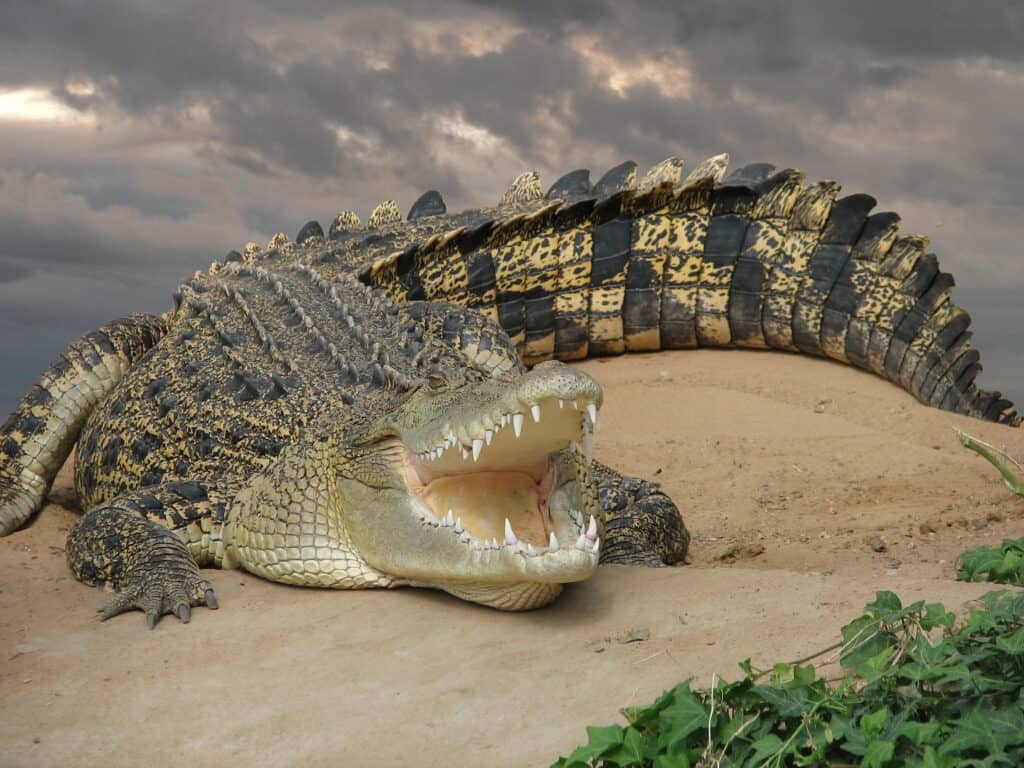
Male saltwater crocodiles can measure up to 23 feet in length and weigh up to 2,200 pounds.
©Susan Flashman/Shutterstock.com
Several species of crocodiles exist from the diminutive dwarf crocodile to the massive saltwater (“saltie”) crocodile. This means they range considerably in size. Below are the sizes of male and female crocodiles for the largest and smallest species (saltwater and dwarf respectively):
Saltwater Crocodiles
- Length (Male): Up to 23 feet
- Length (Female): Up to 10 feet
- Weight (Male): Up to 2,200 pounds
- Weight (Female): Up to 330 pounds
Dwarf Crocodiles
- Length (Male): 4.0-6.2 feet
- Length (Female): 3-4 feet
- Weight (Male): Up to 180 pounds
- Weight (Female): Up to 88 pounds
Anatomy
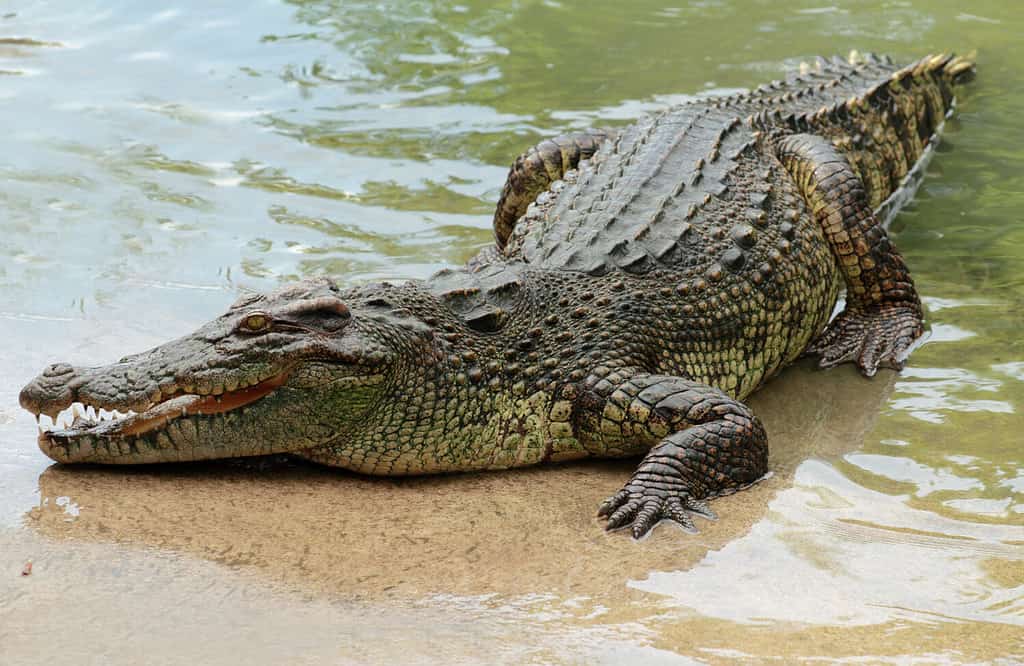
Male crocodiles tend to be larger and broader than females.
©Naypong Studio/Shutterstock.com
Externally, male and female crocodiles of the same species look very similar. Apart from their genitals, which we will discuss in the “Reproduction” section below, there are a few obvious differences. Generally, males tend to be larger and broader than females with a more muscular build. They also have broader snouts and tail bases. However, particularly large or overweight females may appear to be male.
Social Behavior and Temperament
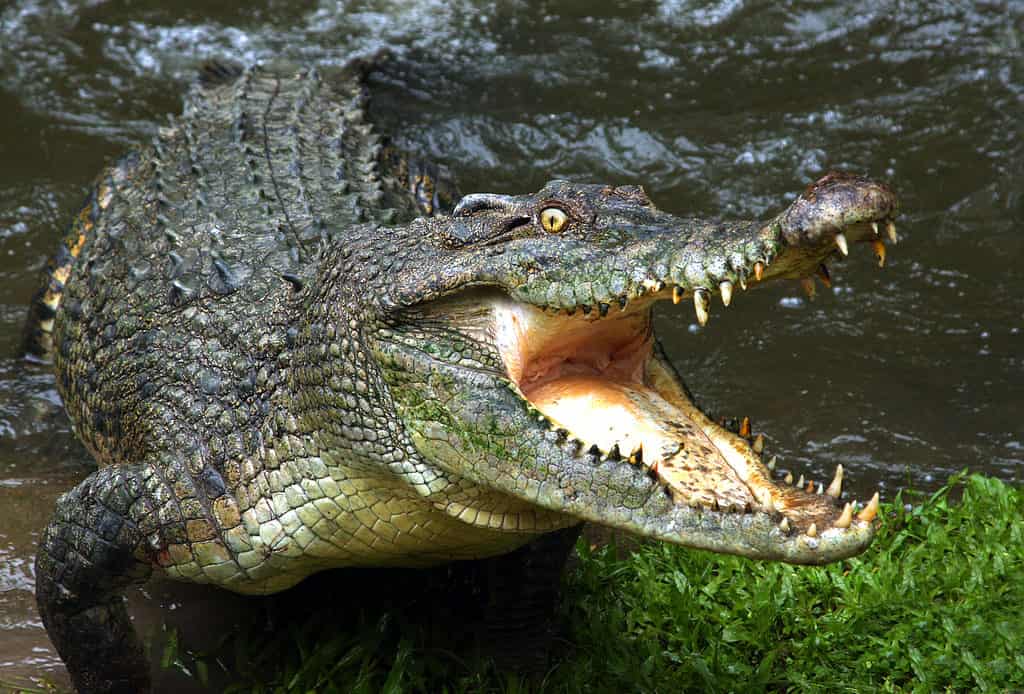
Male crocodiles tend to be more aggressive and dominant than females.
©Audrey Snider-Bell/Shutterstock.com
Socially speaking, males tend to be more aggressive than females. This is because they have to defend their territory against rival males. The only exception to this would be a female defending her young.
Size also influences social behavior and temperament in crocodiles. Large crocodiles behave more dominantly than small ones, which will appease their betters by lifting their snouts in a display of submission. For this reason, females naturally act more submissive than males, though males and females have hierarchies within their sex.
Communication
Male and female crocodiles communicate differently based on their sex, size, and situation. During mating season, females emit a distinctive sound called a hatching call to alert males to their receptiveness. Males use infrasonic vibration in the water and ground to emit a dominant bellow, which they either employ as a mating call or as a means to frighten off predators.
Roles in Raising Young
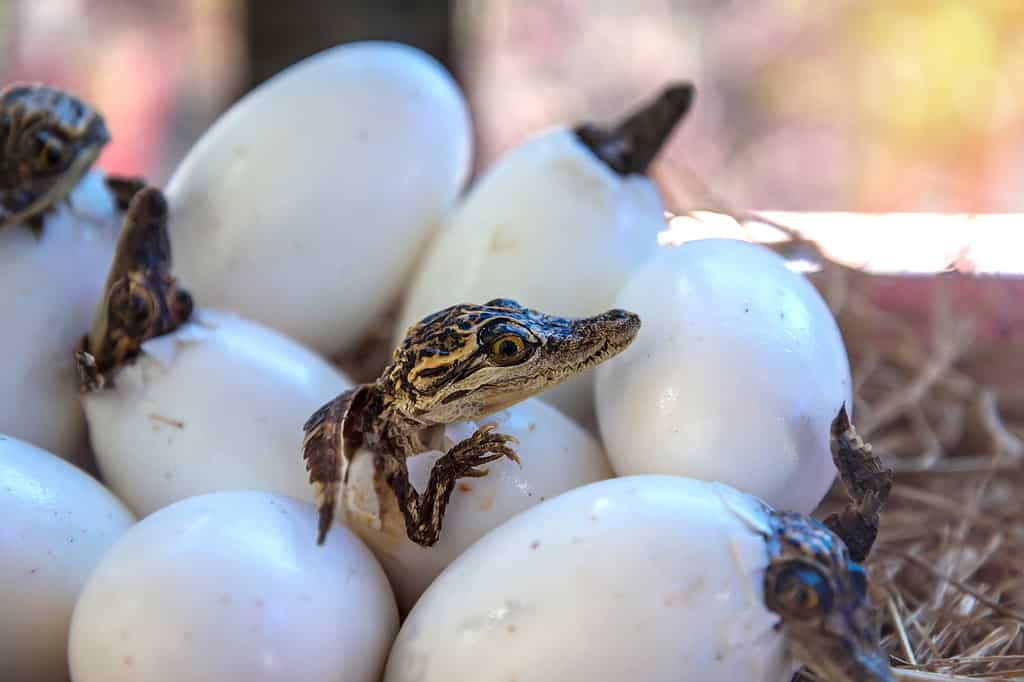
Female crocodiles jealously guard their eggs and hatchlings while males have no role in raising their young.
©Casanowe/iStock via Getty Images
One critical difference between male and female crocodiles has to do with their roles in raising young. Male crocodiles have no part in childrearing, leaving the female to hatch eggs and protect her young by herself. The female takes this responsibility seriously, fiercely guarding her hatchlings until they are about a year old. At times, she will even carry her young in the throat pouch in her mouth.
Reproduction
Although there are several ways to distinguish between male and female crocodiles, the surest way is by sexing them. This involves restraining or sedating the crocodile, turning it on its back, and probing the cloaca under its tail to determine if the animal has a penis or a clitoris. Though both males and females have a cloaca (a common cavity for intestinal, urinary, and genital functions), the cloaca of the male is larger than that of the female. It also tends to protrude outward. It is fairly easy to mistake the sex of a younger or smaller individual as the penis is not as well-developed.
Crocodiles typically mate underwater, which means humans rarely have the chance to observe the ritual in detail. After securing a mate, the male takes hold of the female (he may or may not approach her from the side) and lines up their cloacae. Then he inserts his penis into her cloaca. After mating, the male leaves, and the female prepares a nest of soil and vegetation for her eggs. Incubation takes about three months with the eggs often hatching in time for the rainy season. The female fiercely guards the eggs and, later, the hatchlings until they can function for themselves.
Conclusion
The key differences between male and female crocodiles include size, anatomy, social behavior and temperament, communication, roles in raising young, and reproduction. The best way to determine a crocodile’s sex is by sexing it, though this is rarely viable outside of captivity. Generally, male crocodiles are bigger and more aggressive than females. Needless to say, untrained observers should never approach a crocodile in the wild.
The photo featured at the top of this post is © Danny Ye/Shutterstock.com
Thank you for reading! Have some feedback for us? Contact the AZ Animals editorial team.






